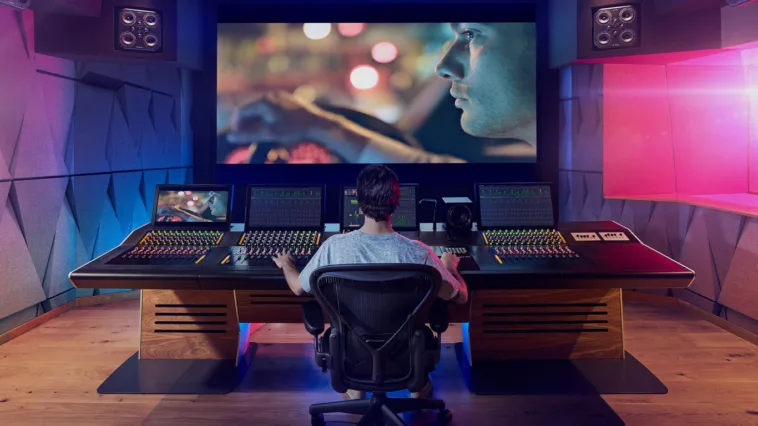You have probably heard the term “jump cut,” and maybe it makes you cringe. Often, jump cuts get a bad rap, painted as the editing trick that disrupts the flow of videos. But let us set the record straight. Jump cuts are not the villains they are made out to be. In fact, when you know how to use them correctly, jump cuts can be your weapon to create engaging content.
So, stick around and keep reading this blog if you want to know what jump cuts are and how to leverage them in your videos.
What is a Jump Cut?
A jump cut is a video editing technique. It cuts between different shots to create a noticeable change in time or space. The term jump cut comes from the jolt the viewer feels due to the abrupt change and “jump” in time.
These cuts often create a jarring or sudden effect. They are a fundamental part of video editing that helps speed up time or create a specific mood in storytelling.
Why Use Jump Cuts?
People often think jump cuts are the editing equivalent of a train wreck. They worry that jump cuts will disrupt the flow and confuse viewers. But the truth is, jump cuts can actually enhance your video when used wisely. Here is why you should use them:
- Maintain Pacing: In videos with much dialogue, use jump cuts to keep the pace up. They trim unnecessary parts, making the content punchier so viewers stay hooked.
- Create Visual Interest: Jump cuts can break up the monotony. Instead of a continuous shot, they add a dynamic visual element that grabs attention.
- Highlight Key Moments: Jump cuts can draw attention to important parts of a video. If there is a point or action you want to emphasize, jump cuts can help spotlight it. For example, you might cut from someone talking to a close-up of their face to make their words hit harder.
- Hide Mistakes: Sometimes, things do not go as planned in production. A jump cut can cleverly hide mistakes without disrupting the flow of the video. It can skip over a fluffed line or a brief, awkward pause.
- Build Rhythm and Energy: Jump cuts can match the rhythm of your video. If you are editing a high-energy music video or a fast-paced vlog, jump cuts can keep up with the beat or action. They can make your content feel more lively and in sync with the rhythm.
- Add Humor or Surrealism: In comedic or experimental content, you can use jump cuts to jar or surprise the audience. This adds to the humor or creates a surreal atmosphere.
- Break the Fourth Wall: You can also use jump cuts to shatter continuity in scenes and engage the audience.
When to Use Jump Cuts?
Not every video benefits from jump cuts, but they are great for specific projects. For example, you can use jump cuts when you are making:
- Tutorials and How-To Videos: If you are showing a process, jump cuts can help skip over repetitive actions and keep the focus on crucial moments.
- Interviews and YouTube Vlogs: They can trim long-winded answers, cut out the filler, and keep the conversation lively and engaging.
- Music Videos: Apply jump cuts to create rhythmic edits that match the song’s beats. For example, artists like Kanye West and Beyoncé use jump cuts to create visually compelling stories that match their music’s energy.
- Films, Documentaries, and TV Shows: You can use jump cuts to build tension, show the passage of time, or create stylistic effects. For example, Quentin Tarantino’s films often feature jump cuts that add to their distinctive style.
How to Master Jump Cuts?
Mastering jump cuts involves more than just knowing how to make the cuts. It is about refining your technique to ensure the final product is polished and professional. Here are some tips to help you get the most out of jump cuts:
- Plan Your Shots: Think about where your jump cuts will go. Plan for cuts where they are less noticeable or more effective.
- Keep it Natural: Overusing jump cuts can make your video feel disjointed. Use them sparingly and only where they add value to the story. Use jump cuts to speed up the narrative, build tension, or maintain engagement. Avoid cuts that feel random or disruptive.
- Use B-Roll: Incorporate B-roll footage to cover cuts and add visual interest. This helps if your video jumps between different locations or angles. By using this, you can make a jump cut feel less jarring.
- Match the Action: For a jump cut to feel smooth, the actions in the shots should match. Align cuts with similar elements in your shots, like movements, sounds, or objects. This will prevent disorienting the viewer.
- Edit for Rhythm: The rhythm of your cuts should match the rhythm of your video. If your video is fast-paced, faster jump cuts can enhance that energy. For a slower video, more subtle jump cuts might work better.
Keep Your Videos Crisp with Jump Cuts
Jump cuts are one of the most versatile techniques in video editing. But here’s the thing – they only work if you use them right.
Think of jump cuts like seasoning. Too much, and your video feels chaotic. Not enough, and it can drag. The key is knowing how to balance them so they enhance, not hurt, your content.
That is where our team at Motion Edits can help you. If you need help with a project, we can enhance your videos. We have the expertise to make them visually exciting and highly watchable.
So, keep experimenting with jump cuts, and don’t be afraid to get creative. And if you ever need expert guidance, you know where to find us.
You May Like To Read:
Our Top Collection of Creative Cuts and Editing Techniques
